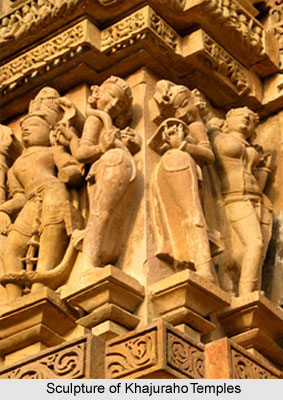 Indian temple sculpture can be divided into two types: the Nagara (North India) and the Dravidian (South India). The primary difference between the two is the way in which the shikharas of the temples are carved out. As far as the architectural elements are concerned these include the garbhagrihas, vimanas, mandapas, miniature towers, lathe turned pillars and others. These are common to almost all the Hindu temple sculpture. Another interesting facet of the Indian temple sculptures is the Indian cave temples.
Indian temple sculpture can be divided into two types: the Nagara (North India) and the Dravidian (South India). The primary difference between the two is the way in which the shikharas of the temples are carved out. As far as the architectural elements are concerned these include the garbhagrihas, vimanas, mandapas, miniature towers, lathe turned pillars and others. These are common to almost all the Hindu temple sculpture. Another interesting facet of the Indian temple sculptures is the Indian cave temples.
The sculptures of the 2nd and 3rd century BC depict the episodes from the life of Lord Buddha, in the architectural setting of the Vedic period. The Hindu Temples are unique temples among the India`s prehistoric monuments. The symbolic meaning can be viewed in the architecture of the temple with its three elements, namely, the base, the walls and the spire, which correspond to Earth, Space and Heaven.
The best specimen of the Mauryan stone sculpture had a rare feeling for monumental form and royal power. The sculpture has an exquisite finish and a brilliant polish. The monolithic pillars of Ashoka on which are inscribed his famous edicts are the great monuments of the Mauryan age. The most striking feature of these pillars is the finely carved capital with magnificent animal figures.
In east India in the state of Orissa the finest examples of exquisite sculpture are the Lingaraja temple and the Konarak temple. Each wheel of the chariot in the Konark temple has rich carvings. The human and animal figures are carved out in black stone. The poses of dancing apsaras depicted look lively. The theme of several of these sculptures is passionate. The Chandella rulers of central India built temples of Khajuraho that is adorned with sculptures. The style of the shikhara varies from that of the others. The Jain temples at Mount Abu are the finest monuments of the Solanki kings of Gujarat who were great patrons of art. The Abu temples are very attractive because of the delicate and intricate carvings in white marble.
The south Indian temple sculptures can bestow a completely separate identity to the temple building idiom in India. The south Indian temple sculpture received an added boost under the reign of the Cholas and Chalukyas. While the Vijayanagara Empire immortalised their art and sculpture on stone in Hampi, the former two kingdoms are also renowned for their massive temples. Another special feature of the south Indian temple sculpture is the miniature towers.



